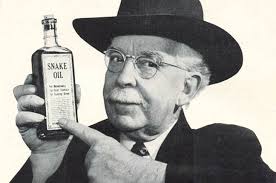An article of mine responding to Forward contributing editor Jay Michaelson’s lament over the appointment of Betsy DeVos as the nation’s next Secretary of Education appears in that paper, accessible here.

An article of mine responding to Forward contributing editor Jay Michaelson’s lament over the appointment of Betsy DeVos as the nation’s next Secretary of Education appears in that paper, accessible here.

The sobbing of some political liberals, including, of course, many Jews, that ensued after the presidential election results were tallied has turned into wild wailing with the appointment of Stephen Bannon as senior counselor to the president-elect.
Those observers were shocked enough back in August, when Mr. Bannon, the executive chairman of the politically conservative Breitbart News, was put in charge of Donald Trump’s campaign. Now, though, mouths are foaming.
Partisan condemnation of Mr. Bannon’s recent appointment was expected. 169 House Democrats signed a letter to Mr. Trump characterizing his new appointee as a purveyor of anti-Semitism, misogyny and racism. Senate Minority Leader Harry Reid called him “a champion of white supremacy.”
In the Jewish world, the Union for Reform Judaism accused Mr. Bannon of being “responsible for the advancement of ideologies antithetical to our nation, including anti-Semitism, misogyny, racism and Islamophobia.”
The Anti-Defamation League said that Bannon is “hostile to core American values.”
Forward editor Jane Eisner, asserted that with Bannon’s appointment, “the anti-Semitic sentiments of the far right are closer to the center of political power than they have been in recent memory.”
And the National Council of Jewish Women pronounced its verdict: “Bannon and his ilk must be barred from his [Trump] administration.”
The actual evidence for labeling Bannon an anti-Semite, or enabler of anti-Semites, or racist, or all-around monster is slim. No, actually, nonexistent.
Not that a yeoman’s effort hasn’t been expended to make the case. The news organization that Mr. Bannon has headed since the death of its founder Andrew Breitbart in 2012 is certainly not to many people’s tastes (my own included). It makes famously right-leaning Fox News seem like a liberal lamb. And it has a penchant for putting provocative headlines on entirely reasonable (if arguable) opinion pieces.
Headlines like: “Bill Kristol: Republican Spoiler, Renegade Jew.” That Breitbart piece, written by political conservative David Horowitz, was an unremarkable gripe about the fact that Mr. Kristol, a dean of American conservatism, had written critically about Donald Trump. Mr. Horowitz noted how “Iran, the Muslim Brotherhood, Hezbollah, ISIS, and Hamas” have “openly sworn to exterminate the Jews,” and shared his feeling that the Obama administration was not adequately facing that threat to Jews and to America. “To weaken the only party that stands between the Jews and their annihilation, and between America and the forces intent on destroying her,” Horowitz wrote, “is a political miscalculation so great and a betrayal so profound as to not be easily forgiven.”
Whatever one might feel about that article’s thesis, it was run-of-the-mill intra-Republican kvetching and not, by any measure, anti-Semitic.
Another piece of “evidence” for Bannon’s malevolence is the claim of his former wife, in divorce documents, that, while seeking a private school for his children, he made a remark about “spoiled” Jewish children. Needless to say, unsupported (and denied) accusations in divorce proceedings deserve no one’s attention.
The strongest charge against Mr. Bannon is his statement in an interview last summer that Breitbart News is “the platform for the alt-right.”
But, as has been noted before in this space, the “alt-right” means different things to different people, and includes widely disparate elements.
What those elements generally share is a dedication to family values; a reverence for Western civilization and rejection of multiculturalism. The fringes of the movement, though, can include racism, opposition to all immigration and anti-Semitism. The fringes of the “progressive” wing of American politics, too, include Jew-haters (though they dress up their hatred as “anti-Israel” sentiment).
Imagining that Mr. Bannon meant to include the alt-right’s tattered fringes in his statement is ungenerous, and unsupported by the actual content of Breitbart offerings. As far back as 2014, he explicitly predicted that racism would eventually get “washed out” of right-wing movements.
As it happens, not only was the late Mr. Breitbart Jewish, but the news service carrying his name was started by a Jewish lawyer and businessman, Larry Solov, who conceived it during a trip he made to Israel with Mr. Breitbart. It was to be “a site,” Mr. Solov wrote, “that would be unapologetically pro-freedom and pro-Israel.” Which it has been.
I don’t automatically accept the veracity of what I read at Breitbart, or in The New York Times. Every news medium, whether it admits it or not, has its slant and partialities. A semblance of accuracy can only be gained by reading, and balancing, a variety of media, fully aware of each one’s biases.
Racism and anti-Semitism are malign, to be sure. So, though, is, carelessly and without evidence, casting labels like “racist” or “anti-Semite” about.
© Hamodia 2016

Well, we’ve all had some time by now to recover from the year-and-a-half-long national convulsion that passed for a presidential campaign. Might there be something positive to point to in an experience most of us would prefer to somehow un-experience?
Well, there’s no way to make any sort of purse, much less a silk one, out of this particular sow’s ear. But still, in the campaign’s waning days, there was a flicker of civility to behold.
It came at a time of particular tension for the Clinton campaign – after FBI chief James Comey’s first statement revealing the discovery of a new trove of possibly problematic e-mails, and before his second one revealing that the trove was untainted.
It took place at a Clinton rally at Fayetteville State University in North Carolina. As President Obama addressed the large crowd, a protester wearing a military uniform stood up at the front of the gathering, holding aloft a pro-Trump placard. Predictably, a wall of loud, sustained boos resulted.
In professorial tones, Mr. Obama told the crowd to calm down. When it didn’t, he raised his voice. “Everybody! Hey! I told you to be focused and you’re not focused right now. Sit down and be quiet for a second!” The boos faded to a muted murmur.
“You’ve got an older gentleman,” the president lectured his listeners, referring to the protester, “who is supporting his candidate. He’s not doing nothing… This is what I mean about folks not being focused. First of all, we live in a country that respects free speech. Second of all, it looks like maybe he might have served in our military and we ought to respect that. Third of all, he was elderly and we got to respect our elders.”
The incident was reminiscent of one in 2008, at a Republican town hall meeting in Minnesota, where Senator John McCain, Mr. Obama’s opponent at the time, also had to deal with supportive but misguided booing – and did so decisively.
A supporter had said he was “scared” of the prospect of an Obama presidency, and the crowd loudly vocalized its approval. But Mr. McCain refused to bask in the anger.
“I have to tell you,” he said. “Senator Obama is a decent person and a person you don’t have to be scared of as president of the United States.”
“Come on, John!” someone shouted out. Others loudly labeled Mr. Obama “liar,” and “terrorist.”
Then a woman who had been handed a microphone said “I can’t trust Obama. I have read about him and he’s not, he’s not, uh – he’s an Arab.” Mr. McCain retrieved the mike and replied: “No, ma’am. He’s a decent family man [and] citizen that I just happen to have disagreements with on fundamental issues, and that’s what this campaign’s all about.”
Such moments of comity are all too rare in the tumult of of campaign-tornados, like the recent one, that swirl angrily with snide innuendo, malign spin and outright lies – all eagerly drunk in and spat out by partisan pundits. But those moments are the ones consonant with the concept of menschlichkeit.
Pleasing, too, if not unexpected, was hearing Mrs. Clinton, the day after the election, tell her supporters that “Donald Trump is going to be our president. We owe him an open mind and the chance to lead.”
As it was hearing Mr. Obama, that same day, declaring that “we are now all rooting for [Mr. Trump’s] success in uniting and leading the country.”
The president’s decency was all the greater for his citing that of his predecessor. “Eight years ago,” Mr. Obama recalled, “President Bush and I had some pretty significant differences. But President Bush’s team could not have been more professional or more gracious in making sure we had a smooth transition so that we could hit the ground running.”
It’s no secret that I have come to judge the current president much more favorably than many in the Orthodox Jewish world. But I came to that conclusion only after Mr. Obama, to my lights, demonstrated his commitment to the safety and security of Israel and Jews. Until then, like others, I feared what the punditocracy was preaching about the purported Muslim, chassid of unhinged hater Reverend Wright, husband of a black power radical and all-around evildoer who had somehow infiltrated the White House.
Like many, even among some of Mr. Trump’s supporters, I have concerns about the president-elect. Heeding Hillary’s admonition, though, I am keeping an open mind, and will let future facts lead me where they will. I am hoping that the new president, like his predecessor, will come to pleasantly surprise me.
© Hamodia 2016

On the first day of Sukkos, after tens of thousands of Jews had paid princely sums for flawless specimens of a particular citrus fruit, payments were made by others, too, for a very different reason.
That day, the Smithsonian Institution’s National Museum of American History launched a public campaign to raise $300,000 in order to restore and preserve a pair of slippers, those that were worn by the main character in the 1939 film production of a children’s classic.
“The shoes,” explained the Smithsonian, “are fragile and actively deteriorating.” Their color, appallingly, “has faded, and the slippers appear dull and washed-out. The coating on the sequins that give the shoes their hallmark ruby color is flaking off its gelatin base. Some threads that hold sequins in place have broken.” Something had to be done.
The campaign, which aimed at repairing the footgear and constructing a special temperature-controlled and light-controlled enclosed environment to ensure that the slippers last into perpetuity, was intended to span three weeks. By Shemini Atzeres, though, it had already exceeded its goal, and donations continue to pour in. Support came from 41 countries, with the highest concentration of donors in New York, Los Angeles and Washington, D.C. And likely the fictional town of Chelm.
To paraphrase the prayer recited by mesaymim, “We expend funds and they expend funds.” And what an intriguing contrast the respective mass expenditures provide.
“Conserving an American Icon” is what the Smithsonian dubbed its save-our-slippers movement. “Icon” is a word borrowed from the Greek, and can mean “idol.” Whether the good-heartedly nostalgic donors to the Keren HaSlippers, for their adoration of physical objects, can be categorized as idolaters is not something I am prepared to say, or qualified to judge. But such simpleminded devotion can prove something of, if an irresistible pun can be forgiven… a slippery slope.
After Yom Tov, of course, many esrogim were either consumed fresh or, processed, as jelly. Others were just put aside to petrify. While the fruits were immensely valued for seven days, they had an expiration date, so to speak, one unrelated to their freshness. And that speaks to the essential difference between how a Jew looks at an esrog and how a sentimental soul sees a theatrical relic. The esrog is a means of performing a mitzvah, not an inherent object of adulation. It is valuable for the opportunity it provides to serve Hashem, a means toward a goal, not something to be venerated. And so, once its purpose as a path toward the performance of a mitzvah has been fulfilled, it reverts to a mere fruit.
To be sure, there are objects in our own world that possess inherent holiness, like kodoshim, meat or flour-offerings from korbanos brought in the Beis Hamikdash; or, today, a sefer Torah. But kodoshim is, in the end, consumed or burned, and a sefer Torah’s holiness derives from the words it contains, not from ink and parchment themselves; and when it is no longer usable, it is buried.
There are, moreover, Jews who treasure objects that were once used by great tzaddikim. But only, at least properly, because of the objects’ connection to those tzaddikim, who were in fact worthy of veneration because of the lives they lived. Rather different, to greatly understate things, from an artifact of a theatrical production.
Non-Jews, and Jews unfamiliar with their spiritual heritage, if aware of the prices paid by observant Jews for esrogim, must think us strange. After all, the most beautiful, symmetrical, aromatic lemon in the Trader Joe’s bin commands at most fifty cents. And it has a nice, smooth skin, too.
And if they knew of all the other substantial expenditures we make, for talmud Torah, for Shabbosos and Yamim Tovim (for Pesach alone!), for kosher meat, for tzeddaka… they would surely think us entirely unhinged. They, though, don’t comprehend what a mitzvah means to a heartfelt Jew.
If only they could truly appreciate the meaning of a mitzvah, they would perceive the deep contrast between cherishing a meaningless prop and valuing a precious objet d’mitzvah. If they only, so to speak, had a bren.
This past Sukkos gave us an example how starkly divergent are our world and the one “out there.”
A set of footwear was confirmed in the status of an icon, and a large sum was dedicated to its preservation – at least in the hopes of curators and now grown-up children – for eternity.
And a mitzvah was, as every year, performed at considerable expense by Jews, affording them actual access to eternity.
© 2016 Hamodia

It can be read at:
http://www.haaretz.com/opinion/.premium-1.750731?=&ts=_1478444374594

For all but the most starry-eyed devotees, or family members, of an aspirant to public service, voting essentially boils down to deciding which evil is lesser.
Well, that’s a bit harsh. What I mean is that it’s nearly impossible for any candidate to fit the full bill of any voter’s list of qualifications and preferred positions on all matters of importance. One aspirant to public office may have a preferable economic plan but a dismal approach to immigration or security matters; another may be on the right page regarding social issues but on a very wrong one when it comes to geopolitical ones. And then there are important other factors in play, like intelligence, honesty, gentility and likeability (or their absenses).
If polls and man-in-the-street interviews are any indication, in the presidential election that is rapidly (and blessedly) soon coming to an end, the “lesser evil” calculus seems particularly pertinent. Both candidates’ negative ratings are, well, impressive.
Many factors might be blamed for that state of affairs, and for the general deterioration of American political campaigning. A prominent one is money.
Hundreds of millions of dollars have been raised to feed each of the current candidates’ cash-famished campaigns. And were a dollar equivalent to be assigned to the free airtime garnered by one candidate’s propensity to make attention-getting pronouncements, he (oh, shucks, I gave it away) has effectively either paid or received the equivalent of over a billion bucks.
Most complaints about the role of money in political campaigns revolve around the undue influence wielded by a relatively small group of very wealthy individuals. And it’s a valid concern. A mere 250 donors accounted for about $44 million in contributions to the Hillary Victory Fund during the last year.
The billionaire oilman T. Boone Pickens has boasted that he “won the election in 2004 for Bush.”
In the 2012 election season, Charles and David Koch, who own the lion’s share of the second-largest privately held company in the United States, pledged $60 million to defeat Barack Obama. Of $274 million in anonymous contributions that year, according to the nonpartisan Center for Responsive Politics (CRP), at least $86 million came from “donor groups in the Koch network.”
In 1996, according to the CRP, the two major parties spent $448.9 million on the general election; in 2012, they spent $6.3 billion.
The republic’s founding fathers envisioned government as emerging from the consent of the governed, not the gvirim.
Then there is the toll taken by the fact that fundraising – in 2010, candidates for Congress spent $1.8 billion in their bids for office – has become a way of life for elected officials, swallowing up time and effort that could otherwise have been spent doing, well, what those legislators were elected to do.
Even more disturbing, at least to this decidedly apolitical observer, is what the money actually does. How, in other words, does a mega-stuffed campaign chest translate into mega-votes?
The answer is that cash can capitalize on ignorance.
Most voters, unfortunately, are far from conversant with the intricacies of issues, even those that they may care about the most. The average citizen finds calculations and thinking more than a step or two ahead to be boring endeavors, and more readily responds to appeals to emotions – good, bad and ugly ones alike.
A large chunk of political contributions goes to crafting and making those appeals. And so, political ads and mail pitches– no different in any way from those that make people buy particular brands of shampoos, beer or automobiles based on imagery and fantasy rather than quality – have become proven tools for effectively translating dollars into votes.
“Buying votes” used to mean ward bosses offering cash to individuals for their pledge to cast their ballots a certain way. Times have changed, though. Today, vote-buying is accomplished less sleazily, though no less ignobly.
In a saner democracy, there would be no campaign ads at all, only the presentation of detailed positions on issues of importance. Candidates would write manifestos, not lob accusations and insults. Debates, if we had them at all, would be strictly limited to issues, with candidates arguing the virtues of their respective goals and policies. Boasting, insulting, punching and counterpunching would be relegated to boxing rings, whence they came. (Actually, boxing is another blood sport the world would be a better place without.)
Alas, the Shafran System of Democratic Electioneering has about as much a chance at being adopted as Gary Johnson has of being elected president this November.
Still, one can fantasize, no?
© 2016 Hamodia

Just in time for Rosh Hashanah, a number of media, including the Wall St. Journal and the Jewish Telegraphic Agency, found a good “Jewish” story in the popularity and abundance of dogs in Tel Aviv.
Talk about pnei hador kipnei hakelev, the prediction in massechta Sotah (49b) that, with the approach of the Geulah, “the face of the generation will be the face of a dog.”
Tel Aviv, it was reported, is home to 413,000 people and 30,000 dogs, and, declaring itself the friendliest city in the world for dogs, it recently hosted a “dog festival” cutely called “Kelaviv.”
Our mesorah is undeniably sensitive to concern for animals. Not only were Yaakov Avinu and Moshe Rabbeinu caring shepherds, but the Torah prohibits causing an animal unnecessary pain.
I recall as a young boy how my father, shlita, scooped a pair of injured birds from a street and brought them home to care for them. In my own home (which over the years has hosted, among other animals, a goat, an iguana and a tarantula), even insects are captured and released rather than killed.
But like most ideals, concern for animals can be taken too far. The “animal rights” group PETA’s founder once declared that that “Six million Jews died in concentration camps, but six billion broiler chickens will die this year in slaughterhouses.” More infamously, she coined the aphorism “A rat is a pig is a dog is a boy,” reflecting a philosophy nothing short of perverse.
Torah-committed Jews – and all thoughtful human beings – maintain a clear and crucial distinction between the animal sphere and the human one. Animals may be forced to work and may be killed for food. But humans may not, because we are the pinnacle of creation, and are alone gifted with free will.
In my role as Agudath Israel of America’s media liaison, I regularly receive requests for public comment. A number of years ago, a call came in from a major media outlet producing a national program. Flattered, I asked what presumably weighty topic was to be explored. I was thoroughly deflated to hear the response: “Rabbi, we’d like to get your take on the question of whether pets go to heaven.”
I politely declined the offer to comment but then changed my mind. What I realized is that many of the most fundamental philosophical and moral issues of our time – indeed of any time – touch upon the special distinction of humanness. The subject may be the beginning of life or its end; the meaning of family, or of decency. If humans see themselves as mere mammals, they end up in a very different place than if they see themselves as baalei bechirah, creatures with a mission, and the ability to undertake their individual roles in its attainment.
So, as it happens, the Tel Aviv dog articles are not immaterial to Rosh Hashanah at all. They can serve to make us think a bit, and remind us of why pets, and all animals, while they may well serve a higher purpose and achieve a tikkun in their service to us baalei bechirah, do not in fact possess the potential, as we do, to “go to heaven.”
The Berditchever conveys a pithy and pertinent thought on the wording of one of the Torah’s prohibitions of idol worship: bowing down before “the sun, moon or other heavenly bodies that I have not commanded” (Devarim 17:3).
We may not genuflect to the sun, but we may do so to a human being. The navi Ovadiah, for instance, bowed before his master Eliyahu. Explained the Berditchever: People, by virtue of our being commanded creations, intended to not just exist but to shoulder responsibility, are singular parts of creation. Our being commanded exalts us, places us on a plane above everything else in the universe.
The sun and the moon – and animals – are not charged, or able, to choose. They are bounded by their natures and their instincts.
Not so, us.
We may, to be sure, lapse into “instinctive” living at times. But we have the ability to transcend our failures. And that’s why Rosh Hashanah, when we are judged for our choices, is described both as a Yom Hadin, a Day of Judgment, and as a festive holiday. Even as we face our failures and stand kivnei maron, “like sheep,” before the Judge of all, we celebrate with our seudos Yom Tov. Because we are not sheep. We are commanded beings – a fact that should fill us with both awe and joy.
© 2016 Hamodia

Yes, yes, I get it. “Ethnic cleansing” conjures images of Nazi expulsions and murders of Jews, or the 1990s Bosnian war, when Serb and Croat forces intimidated, forcibly expelled or massacred one another to ensure Serb-free or Croat-free territories.
But, like many charged terms, the expression has come to be applied as well to more benign, but still pernicious, attempts to remove populations from areas where they have lived for years, in the interest of creating a mono-ethnic state.
And that is precisely how Israeli Prime Minister Benjamin Netanyahu used the term when noting that Palestinian leaders envision a Jew-free Palestinian state. As recently as 2013, Palestinian Authority president Mahmoud Abbas said in Cairo that, “In a final resolution, we would not see the presence of a single Israeli – civilian or soldier – on our lands.”
Israel, Mr. Netanyahu reminded viewers of the brief video in which he made his comment, has nearly two million Arabs living inside its borders, while the Palestinian leadership “demands a Palestinian state with one pre-condition: no Jews.”
“There’s a phrase for that,” he continued, “It’s called ethnic cleansing. And this demand is outrageous.”
“It’s even more outrageous,” he added, “that the world doesn’t find this outrageous.”
The loud, wild howling you may have heard in the wake of the video’s release was the reaction of much of the world to that observation of the Palestinian emperor’s new (and old) clothes.
Unsurprising were Palestinian and other Arab expressions of anger over the suggestion that it was somehow impolite to insist that Jews finding themselves in a future Palestinian state be forcibly removed.
And only slightly less surprising was U.N. Secretary General Ban-Ki Moon’s pronouncement that the Israeli leader’s remarks were “unacceptable and outrageous.”
There was political criticism within Israel too. Former Justice Minister Knesset member Tzipi Livni (Hatnuah-Zionist Movement) said that the Prime Minister’s video undermined her diplomatic achievements vis-à-vis the settlements.
Even ADL head Jonathan Greenblatt was critical of the “ethnic cleansing” remark. “Israel has many legitimate concerns about Palestinian policies and behavior,” he wrote, “However, the charge that the Palestinians seek ‘ethnic cleansing’ of settlers is just not one of them.” He didn’t, however, explain why it wasn’t.
Disturbing too was the fact that the U.S. State Department joined the chorus of lamentations. Spokeswoman Elizabeth Trudeau responded to a question at a press conference by saying that “We obviously strongly disagree with the characterization that those who oppose settlement activity or view it as an obstacle to peace are somehow calling for ethnic cleansing of Jews from the West Bank.”
Even those who believe in the wisdom (or just the inevitability) of an eventual “two state solution” to the Israel-Palestinian conflict, even if they believe that Mr. Netanyahu was imprudent to have used the loaded phrase, have to admit that, all said and done, it wasn’t inapt.
If you read this column regularly, you know that I am not among the relentless critics of the Obama administration. I feel that the president has been, in concrete actions, as supportive of Israel (if not some of the Netanyahu government’s policies) as any American leader, if not more so. And in fact, not long after the Netanyahu video contretemps, the American administration reached agreement with Israel on a 10-year Memorandum of Understanding that constitutes the single largest pledge of military assistance in U.S. history, totaling $38 billion over 10 years, including $33 billion in Foreign Military Financing funds and an additional $5 billion in missile defense funding.
Even Mr. Netanyahu, despite having asked for yet more (the shuk doesn’t stop at Machaneh Yehudah), was clearly satisfied with the agreement. He could have declined to sign it until after a new administration takes office in three months, but apparently felt that he was better off in Mr. Obama’s hands than in those of his successor.
But my feeling that too many of us view the Obama administration with grossly jaundiced eyes doesn’t mean that there aren’t times when it is deserving of criticism; this is one of them. Even if it views settlements in Yehudah and Shomron as “obstacles” to peace (and the expansion of at least some arguably are), the administration was misguided to regard Mr. Netanyahu’s words as unhelpful. They were very helpful.
If only because they discomfited so many, forcing them to fidget as they tried to justify the unjustifiable: the removal from their homes of people of a certain ethnicity – not to mention one whose members, over the course of history, were exiled repeatedly and callously by a long parade of tyrants, dictators and thugs.
© 2016 Hamodia

The image was, to be sure, jarring: Republican presidential candidate Donald Trump being draped in a tallis.
By an African-American pastor.
In a Detroit church.
To resounding applause.
Bishop Wayne Jackson of the Great Faith Ministries in Detroit effected the atifah while most of us were listening to the Krias HaTorah of Parashas Re’eh, after the candidate addressed the minister’s congregation in an attempt to garner votes from a segment of the population not naturally supportive of his candidacy.
“Let me just put this on you,” Pastor Jackson said, identifying the garment as a prayer shawl “straight from Israel,” and The Donald, although he did look a mite befuddled, didn’t resist.
The congregation was effusive in its praise of the spectacle. Some Jewish media, clergyfolk and armchair pundits, though, considerably less so.
Some took the humor route, like writer Yair Rosenberg, who speculated that “Trump was finally embracing his role as a fringe candidate.”
Others, though, were outraged at, as several described it, the “cultural misappropriation.”
One commentator called it “sacrilege” for Mr. Trump, a non-Jew, to dare to wear a “sacred garment of Jews.” Another, growing apparently increasingly apoplectic, could only comment: “The pastor just gave Trump a tallis from Israel. Which is just … no. Just no. No no no.”
Reform rabbi Ron Kronish, the founder and senior advisor for the Interreligious Coordinating Council in Israel, was appalled by the scene, which he described as “a totally absurd distortion of the meaning of an important Jewish ritual object, which is used by Jews for prayer all over the world.”
Nor could the rabbi resist the opportunity to denigrate Mr. Trump (ignoring the candidate’s karka olam passivity throughout the tallis-donning, which was unexpectedly sprung upon him by the pastor), creatively suggesting that the tallis “is a symbol of humility before G-d” and that while he “would hope that Mr. Trump would not misappropriate this ritual object for his travels… with this megalomania [sic] almost anything is possible.”
Conservative rabbi Danya Ruttenberg huffed that “A Jewish prayer shawl… is a ritual garment. Meant to be worn only by Jews. This is the worst kind of appropriation.”
And Modern Orthodox rabbi Seth Farber expressed his own great discomfort with the use of a “holy object” for “political purposes.”
Now, there is certainly something to be upset about when non-Jews utilize objects associated with Judaism to try to lure ignorant Jews away from their religious heritage. Tallisos, among other things, are routinely employed by missionaries to put a deceptive “Jewish gloss” on decidedly un-Jewish beliefs.
And the Detroit spectacle, too, in fact had distinct Christian overtones. While his victim was trapped in the tallis, Pastor Jackson offered him a second gift, two copies (one for Mrs. Trump) of something called the “Jewish Heritage Study Bible,” which includes distinctly Christian elements. The pastor also saw fit to quote from the Christian bible at that moment.
He, moreover, shared a distinctly un-Jewish description of a tallis, understanding it, apparently, as a good-luck talisman of sorts (over which, he explained, he had fasted and prayed) that, when Mr. Trump will wear it, will “lift you up.”
But the clergyman was not aiming his act or comments at Jews, but rather at Mr. Trump and the congregation. The howls of outrage, I think, say more about the howlers than about the poor pastor or the recipient of his gifts.
The misappropriation of Judaism that more merits vexation is various Jewish clergy’s abusing holy pesukim to justify some of the most decidedly un-Jewish ways of life.
We might wince at bit, or even smirk, at appropriations of things like a tallis or menorah or yarmulke (a Jewish article that most every politician, at least along the coasts, has donned on countless occasions). But waxing indignant over such sillinesses bespeaks being overly sensitive – and insufficiently appreciative of the fact that, despite the dormant, and occasionally not-so-dormant, anti-Semites that infect parts of the nation, so many Americans value, even venerate, things Jewish, and Jews.
The reverend’s reverence for the tallis and his excitement over its Israeli origin – like the blowing of shofaros at civil rights rallies or Pesach “Sedarim” at the White House – should evoke not indignation but perhaps something akin to gratitude. Gratitude, that is, for Hashem’s allowing so many of us Jews to serve out our exile-sentence today in a place where we are not only not hated and hunted but actually, in some ways, appreciated, even revered.
© Hamodia 2016

If the phrase “alt-right” puts you in mind of a computer keyboard, you are (blessedly) not following the presidential campaign.
Even if you are aware of the phrase, though, you may not have a good handle on what it means. For good reason. Many don’t. It’s a hazy phrase.
The term, which is shorthand for “alternative right,” has been in circulation for several years, but it enjoyed a recent moment in a particularly bright spotlight when presidential candidate Clinton, in a speech, sought to make a distinction between mainstream Republicans and what she characterized as holders of a “racist ideology,” i.e. the “alt-right,” who she says are a major base of support for her opponent.
The “alt-right” movement – if it can even be given a label implying some unifying philosophy – means different things to different people, as it includes disparate elements.
What those elements generally share is a dedication to family values; a reverence for Western civilization and rejection of multiculturalism; an embrace of “racialism,” the idea that different ethnicities exhibit different characteristics and are best segregated from one another; and, consonant with that latter credo, opposition to immigration, both legal and illegal.
Mrs. Clinton referenced the alt-right because her rival Donald Trump recently named a new campaign chief, Stephen Bannon, the former executive chairman of Breitbart News, a conservative website some have associated with the group.
The alt-right’s “intellectual godfather,” in many eyes, is Jared Taylor. Although he characterizes himself as a “white advocate,” he strongly rejects being labeled racist, contending that his “racialism” is “moderate and commonsensical,” a benign form of belief in the “natural” separation of races and nationalities. He contends that white people promoting their own racial interests is no different than other ethnic groups promoting theirs. He has said, “I want my grandchildren to look like my grandparents. I don’t want them to look like Anwar Sadat or Fu Manchu.”
Pointing to the homogeneity of places of worship, schools and neighborhoods, he insists that people “if left to themselves, will generally sort themselves out by race.”
Certain of Mr. Taylor’s beliefs may resonate with some Orthodox Jews. We may rightly eschew racism (seeing black Jews, for instance, no different from white ones), but we tend to be less than enamored of some elements of various minority cultures; we deeply value ethnic cohesion, preferring to live in neighborhoods among “our own kind”; and we have serious problems with certain elements of “progressive” western civilization and multiculturalism.
Mr. Taylor, in fact, welcomes Jews. He has said that we “look white to him.”
That sentiment though, is not typical among others under the alt-right umbrella.
Even a nuanced rejection of non-western cultures inevitably attracts genuine racists and haters, and devolves into rejection of the eternal “other”: Jews. The American far right has always embraced, inter alia, one or another form of Jew-hatred. More balanced members of the alt-right refer to their “1488ers” – a reference to two well-known neo-Nazi slogans, the “14 Words” in the sentence “We Must Secure The Existence Of Our People And A Future For White Children”; and the number 88, referring to “H,” the eighth letter of the alphabet, doubled and coding for “Heil Hitler.”
And even Mr. Taylor has permitted people like Don Black, a former Klan leader who runs the neo-Nazi Stormfront.org web forum, to attend his conferences. He may or may not endorse Black’s every attitude, but neither has he rejected his support.
Back in the 1960s, the John Birch Society, then dedicated to the theory that the U.S. government was controlled by communists, was condemned by the ADL for contributing to anti-Semitism and selling anti-Semitic literature. The brilliant and erudite William F. Buckley Jr., the unarguable conscience of conservatism at the time, recognized the group’s nature, and the threat its extremism posed to responsible social conservatives. In the magazine he founded, National Review, he denounced and distanced himself from the Birchers in no uncertain terms, contending that “love of truth and country call[s] for the firm rejection” of the group.
It is ironic that it has fallen to the Democratic presidential contender to make a distinction between responsible Republicanism and the current loose confederacy that includes haters.
In the wake of Buckley’s denunciation of the alt-righters of the time, some National Review subscribers angrily cancelled their subscriptions. Others, though, were appreciative of Buckley’s stance. One wrote: “You have once again given a voice to the conscience of conservatism.”
That letter was signed “Ronald Reagan.”
© 2016 Hamodia